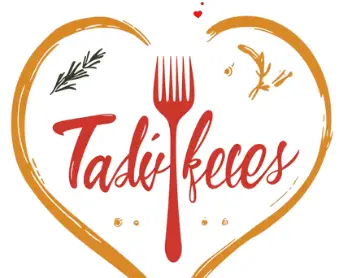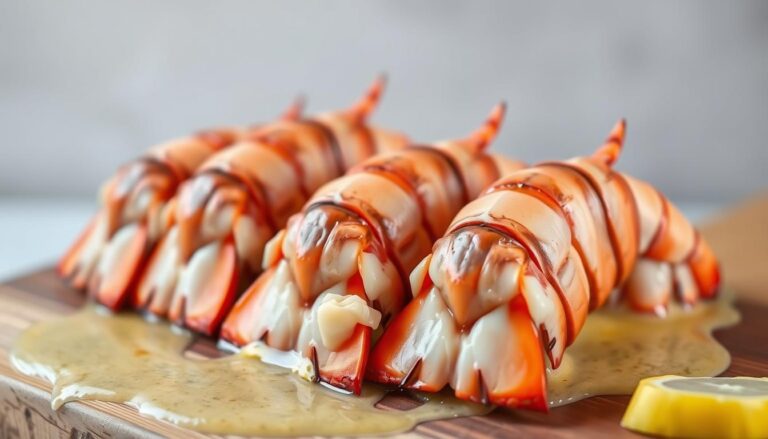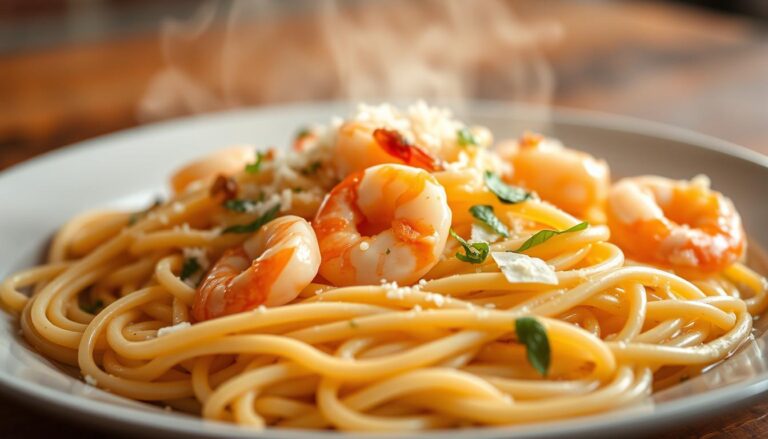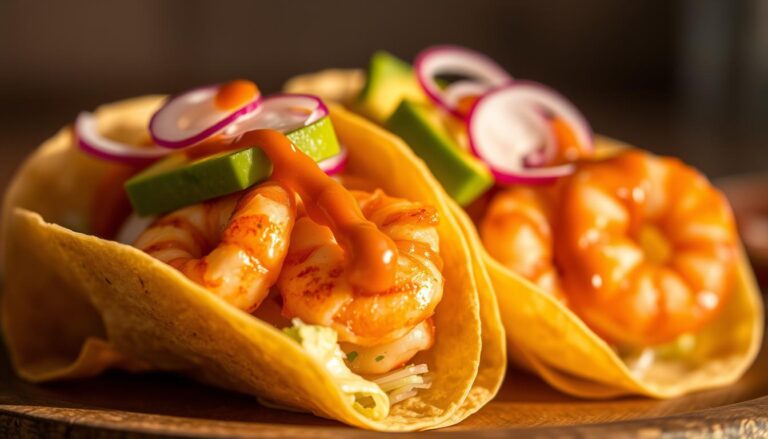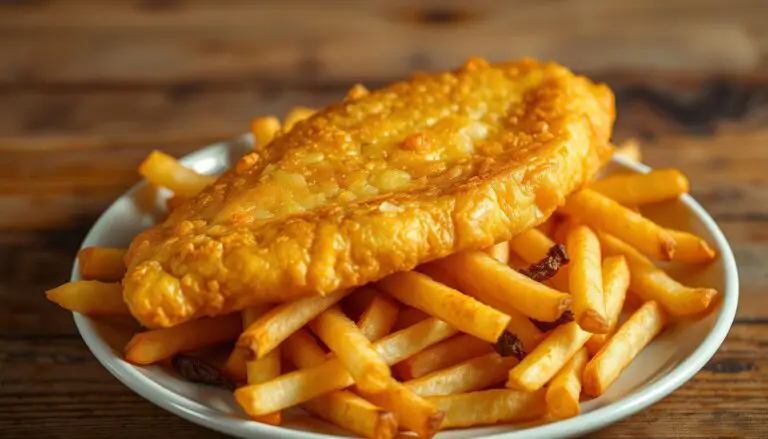There’s something special about gathering around the dinner table to share a meal that’s both nourishing and exciting. For me, that meal is often a traditional Spanish paella, a savory Classic Seafood Paella Recipe dish that’s steeped in history and culture.
Paella is more than just a meal; it’s an experience that brings people together. Originating from Valencia, this iconic dish has become synonymous with Spanish cuisine, boasting various regional interpretations. I’m excited to share with you an authentic seafood paella recipe that captures the essence of coastal Spain, combining succulent seafood with perfectly cooked rice.
Key Takeaways
- Learn how to prepare an authentic Spanish seafood paella recipe.
- Understand the history and cultural significance of paella in Spanish cuisine.
- Discover the key ingredients and cooking techniques required for a perfect paella.
- Get tips on how to cook paella to achieve a restaurant-quality dish at home.
- Explore the versatility of paella and its various regional interpretations.
What is Authentic Seafood Paella?
Seafood paella, a staple of Spanish cuisine, has a rich history that spans centuries and reflects the country’s diverse cultural heritage. To understand this iconic dish, it’s essential to explore its origins and evolution.
The Origins of Spain’s Iconic Dish
The origins of paella date back to Valencia, Spain, where Arab conquerors introduced rice cultivation. The word “paella” may have stemmed from the Arabic word “baquia,” meaning “leftovers.” This humble recipe was initially created by farm workers using available ingredients.

Regional Variations Across Spain
As paella spread throughout Spain, regional variations emerged. In coastal areas, seafood paella became a staple, incorporating fresh fish and shellfish into the traditional rice dish. In contrast, inland regions favored meat-heavy versions, showcasing the diversity of Spanish cuisine.
- Traditional Valencian paella contained chicken, rabbit, snails, and beans.
- Coastal regions adapted paella to include fresh seafood.
- Regional variations reflect the diverse cultural heritage of Spain.
Essential Ingredients for Classic Seafood Paella
The foundation of a delicious Seafood Paella lies in its essential ingredients. To create an authentic dish, it’s crucial to understand the components that make Paella so distinctive.
The Right Rice for Perfect Paella
Spanish rice, specifically “bomba” rice or Calasparra rice, is the traditional choice for Paella. This short-grain rice absorbs more liquid than regular rice without becoming mushy, maintaining the perfect texture. If bomba rice is not available, alternatives like Calrose can be used.
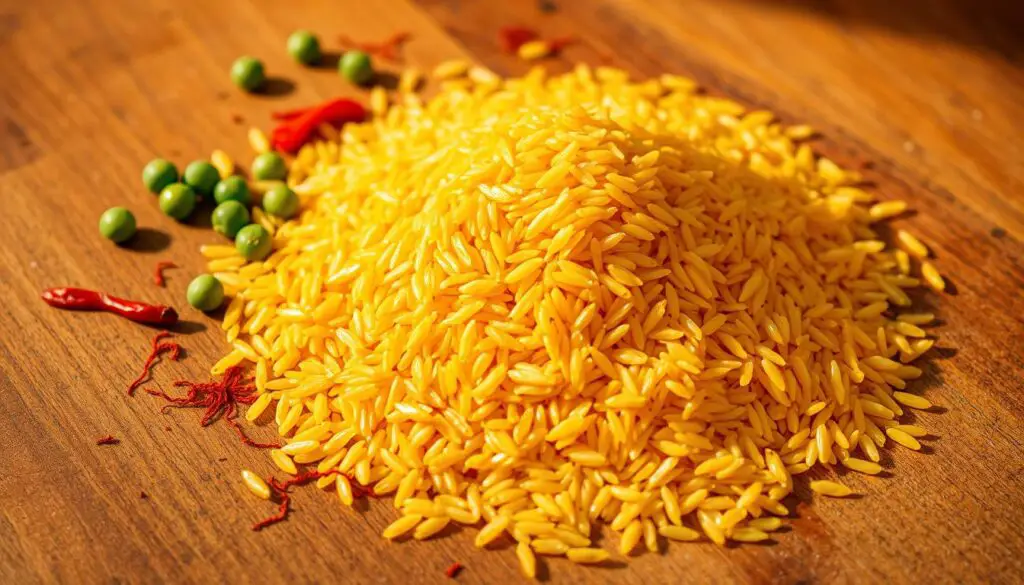
Seafood Selection Guide
For a seafood Paella, selecting the freshest seafood is vital. This includes shrimp, mussels, and calamari, which provide the best flavor. The freshness of the seafood directly impacts the overall taste of the Paella.
Spices and Aromatics
Saffron, the soul of Paella, gives the dish its distinctive golden color and unique floral flavor. Other essential ingredients include garlic, onions, and bell peppers, which create the flavor base (sofrito). Spanish paprika (pimentón) adds depth and smokiness, while olive oil is used for cooking. High-quality saffron is a must; if unavailable, 1 teaspoon of saffron powder can be substituted.
Equipment Needed: Do You Need a Special Paella Pan?
While a traditional paella pan is ideal, it’s not the only option for making delicious paella. I’ve found that a sturdy skillet can work just as well, as long as it has a large and even surface.
The key to cooking paella is to use a pan that can distribute heat evenly and cook the rice quickly. A cast iron skillet is an excellent alternative to a traditional paella pan, as it retains heat well and can achieve a crispy crust on the bottom, known as the socarrat.
Traditional Paella Pans vs. Regular Skillets
Traditional paella pans are made of thin carbon steel, which allows for quick temperature changes. However, a large skillet can serve as a suitable substitute. The main advantage of a traditional paella pan is its wide, shallow design, which maximizes surface area.
What to Look for in a Cooking Vessel
When choosing a pan for paella, look for one with a large, flat cooking surface. Avoid using a wok or deep pot, as they can lead to uneven cooking. A pan with a diameter of 12-15 inches is ideal for serving 4-6 people.
Preparation Steps Before Cooking
The secret to a great seafood paella lies in the preparation steps taken before the actual cooking begins. Proper preparation ensures that all components cook evenly and flavors develop properly.
Preparing the Seafood
When buying fresh seafood, it’s crucial to check its freshness. Fresh seafood should not have a strong fishy odor; instead, it should smell like the ocean or be odorless. To prepare the seafood, you’ll need to clean it properly. This includes deveining shrimp, removing the “beards” from mussels, and cleaning clams. Proper cleaning and preparation of seafood are vital for the overall flavor and texture of the paella.
Preparing the Rice and Vegetables
I like to soak the rice in water for about 15 to 20 minutes before using it. This helps the rice cook more evenly. Meanwhile, prepare the vegetables for the sofrito base by chopping onions, bell peppers, and tomatoes. Proper cutting techniques are essential for the vegetables to cook uniformly and blend well with the other ingredients.
By taking the time to prepare each component carefully, you’ll ensure that your seafood paella turns out delicious and authentic. Preparation is key to achieving the perfect balance of flavors and textures in this classic Spanish dish.
Classic Seafood Paella Recipe Step-by-Step
Let’s dive into the world of Spanish cuisine with a classic seafood paella recipe. This traditional dish is a staple of Spanish cooking, and with this guide, you’ll be able to create a delicious and authentic seafood paella.
Creating the Flavor Base
The foundation of a great paella is its flavor base, also known as sofrito. To create this, heat olive oil in a large skillet over medium heat. Add diced onion, bell peppers, and garlic, and cook until the onion is translucent. This process should take about 5 minutes, and it’s essential to stir occasionally to prevent burning. The resulting mixture should be fragrant and flavorful, setting the stage for the rest of the dish.
Adding and Cooking the Rice
Once the flavor base is ready, it’s time to add the rice. Add chopped tomato, bay leaf, paprika, saffron, salt, and pepper to the skillet, and stir to combine. Cook for 5 minutes, then add white wine and cook for an additional 10 minutes. Next, add chicken pieces, chopped parsley, and rice to the skillet, and cook for 1 minute. Pour in the broth slowly, distributing it evenly throughout the pan. Bring the mixture to a boil, then reduce the heat to medium-low and cook, uncovered, for 15-18 minutes.
Incorporating the Seafood
After the rice has cooked for 15-18 minutes, it’s time to add the seafood. Nestle shrimp, mussels, and calamari into the rice mixture, and sprinkle peas on top. Continue to cook, without stirring, for an additional 5 minutes. The seafood should be cooked through, and the rice should be tender. By following these steps, you’ll be able to create a delicious and authentic seafood paella recipe that’s sure to impress.
The Secret to Perfect Paella: Tips and Techniques
Mastering the art of paella requires more than just following a recipe; it demands a deep understanding of the techniques that elevate this traditional Spanish dish to new heights. Achieving the perfect paella involves a combination of the right ingredients, appropriate cooking vessel, and precise cooking techniques.
Achieving the Socarrat
The socarrat, a crispy caramelized layer of rice at the bottom of the pan, is a hallmark of authentic paella. To achieve this, it’s crucial to manage the heat effectively, creating a hot spot on your stovetop to develop the socarrat without burning the rice. The “no stirring” rule is vital; stirring releases starch and results in a creamy consistency rather than the desired distinct grains. Cooking the paella over medium-high heat for the initial 15-18 minutes, followed by adding seafood and continuing to cook for another 5 minutes without stirring, helps achieve the perfect socarrat.
Common Mistakes to Avoid
Several common mistakes can ruin your paella. Overcrowding the pan, using too much liquid, or cooking at improper temperatures are pitfalls to avoid. The liquid-to-rice ratio is critical and varies depending on the rice variety used. To judge if your paella is perfectly cooked, look for visual cues and test the rice texture. If issues arise, such as undercooked rice or excess broth, adjust the cooking time or add a bit more stock as needed. By being mindful of these factors, you can ensure a delicious and authentic paella experience.
Delicious Variations of Seafood Paella
Beyond the classic seafood paella, numerous variations exist, showcasing the dish’s flexibility and regional diversity. Paella, being a traditional Spanish dish, has evolved over time, incorporating various ingredients based on regional preferences and available produce.
Mixed Paella with Chicken and Seafood
One popular variation is the mixed paella, or paella mixta, which combines seafood with chicken and sometimes chorizo for added flavor. To make this version, you can follow the classic seafood paella recipe and add chicken thighs or breast, adjusting the cooking time accordingly. This blend of seafood and chicken offers a hearty and satisfying meal.
- Combine chicken and seafood for a mixed paella.
- Add chorizo for an extra layer of flavor.
- Adjust cooking times to ensure both proteins are perfectly cooked.
Vegetarian Paella Options
For a vegetarian version, you can omit the seafood and meat, focusing on a variety of vegetables such as artichokes, bell peppers, green beans, and mushrooms. Adding these vegetables in the initial steps along with the aromatics enhances the flavor. This version is not only delicious but also caters to vegetarian dietary preferences.
- Use a mix of colorful vegetables like bell peppers and artichokes.
- Add green beans and mushrooms for texture and flavor.
- Season with saffron and paprika for an authentic taste.
These variations demonstrate the versatility of paella, allowing you to experiment with different ingredients while maintaining the essence of this traditional Spanish dish.
How to Serve and Enjoy Your Paella
Serving paella is an art that requires attention to detail and a touch of Spanish flair. After cooking, remove the pan from the heat and cover it with a lid or tinfoil. Place a kitchen towel over the lid and allow it to rest for 10 minutes. This resting period is crucial as it allows the flavors to meld and the rice to finish cooking through residual heat.
Traditional Accompaniments
Garnish your paella with fresh parsley and lemon slices to add brightness and visual appeal. Traditionally, paella is served family-style directly from the cooking pan placed at the center of the table. You can complement your paella with simple accompaniments like a green salad, crusty bread, or aioli for dipping.
- A simple green salad provides a refreshing contrast to the rich flavors of paella.
- Crusty bread is perfect for dipping in the savory broth that accompanies the dish.
- Aioli adds a creamy element that complements the seafood.
Wine Pairings for Seafood Paella
For an authentic Spanish dining experience, consider pairing your paella with a crisp white wine like Albariño or Verdejo. Alternatively, a light sangria can add a casual touch to your meal. To start, a chilled tomato gazpacho can be a refreshing appetizer, and for dessert, Crema Catalana, Spain’s version of crème brûlée, is a delightful choice.
Conclusion
With the knowledge and techniques shared in this article, you’re now ready to bring the authentic flavors of Spanish seafood paella to your kitchen. This classic dish may seem intimidating, but by following the step-by-step recipe and understanding key principles, you can achieve restaurant-quality results. Remember, quality ingredients, particularly rice and fresh seafood, are crucial. Don’t be afraid to adapt the paella recipe to your preferences, and enjoy the process of preparing and sharing this communal dish with family and friends.
